Novice
Investigating an earthquake’s frequency and magnitude
[See previous Parts 1-2] The Earthquake Machine is a mechanical model used to illustrate the earthquake cycle and to investigate the behavior of fault systems. Two groups of learners are presented with separate claims about earthquakes. Using the model, learners design an investigation to collect data to either refute or support their claim. After collecting evidence, the information is used to construct an argument regarding the claim.
The Earthquake Machine can be used to demonstrate:
A) Magnitude: how far the sandpaper block moves when friction is overcome by the strain of a rubber band pulling on the block and
B) Time indicating earthquake frequency: how far the rubber band stretches before the sandpaper block moves. In this investigation, one cm = one year.
Learners should be able to:
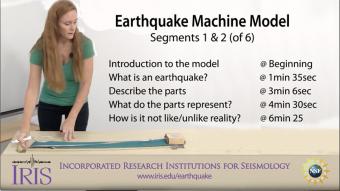
Earthquakes are associated with displacements on faults. In this lesson, learners work collaboratively in small groups to explore the earthquake cycle by using a mechanical model.
MenSegments 3–6 (separate video) expand on this demonstration to include collecting the data and plotting it on graphs.
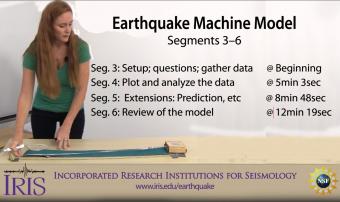
Using the Earthquake Machine as a model, two groups of learners are presented with separate claims about earthquakes. Learners design an investigation to collect data to either refute or support their claim. After collecting evidence, the information is used to construct arguments regarding their claims.
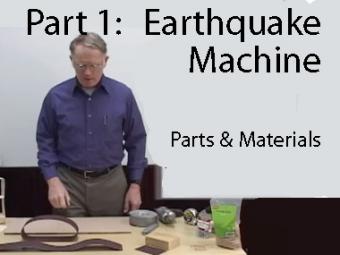
This video shows how to build the "Earthquake Machine", a physical model that represents the “earthquake cycle”, the slow accumulation of elastic energy in rocks on or adjacent to a fault followed by rapid release of elastic energy during an earthquake.
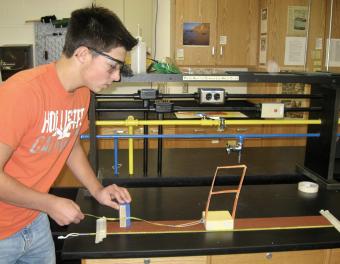
Using a block-and-sandpaper model, students collaborate in small groups to investigate how energy is stored elastically in rocks and released suddenly as an earthquake (the earthquake cycle). This activity emphasizes the role of mechanical models in understanding and testing ideas in science.
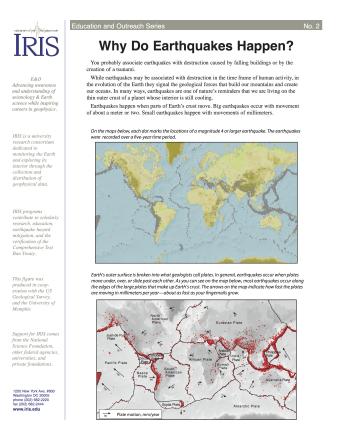
Many people associate earthquakes with destruction caused by falling buildings or by the creation of a tsunami. While earthquakes may be associated with destruction in the time frame of human activity, in the evolution of the Earth they signal the geological forces that build our mountains and create our oceans. This fact sheet provides an introduction to the causes of earthquakes.
We encourage the reuse and dissemination of the material on this site as long as attribution is retained. To this end the material on this site, unless otherwise noted, is offered under Creative Commons Attribution (CC BY 4.0) license